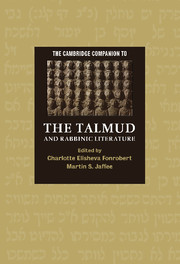Refine search
Actions for selected content:
23990 results in Ancient history
Frontmatter
-
- Book:
- The Cambridge Economic History of the Greco-Roman World
- Published online:
- 28 March 2008
- Print publication:
- 29 November 2007, pp i-xv
-
- Chapter
- Export citation
Part III - Classical Greece
-
- Book:
- The Cambridge Economic History of the Greco-Roman World
- Published online:
- 28 March 2008
- Print publication:
- 29 November 2007, pp -
-
- Chapter
- Export citation
Part VI - The Early Roman Empire
-
- Book:
- The Cambridge Economic History of the Greco-Roman World
- Published online:
- 28 March 2008
- Print publication:
- 29 November 2007, pp -
-
- Chapter
- Export citation
3 - Demography
- from Part I - Determinants of Economic Performance
-
-
- Book:
- The Cambridge Economic History of the Greco-Roman World
- Published online:
- 28 March 2008
- Print publication:
- 29 November 2007, pp 38-86
-
- Chapter
- Export citation
11 - The Persian Near East
- from Part II - Early Mediterranean Economies and the Near East
-
-
- Book:
- The Cambridge Economic History of the Greco-Roman World
- Published online:
- 28 March 2008
- Print publication:
- 29 November 2007, pp 302-330
-
- Chapter
- Export citation
8 - Early Iron Age Greece
- from Part II - Early Mediterranean Economies and the Near East
-
-
- Book:
- The Cambridge Economic History of the Greco-Roman World
- Published online:
- 28 March 2008
- Print publication:
- 29 November 2007, pp 211-241
-
- Chapter
- Export citation
26 - Roman Egypt
- from Part VII - Regional Development in the Roman Empire
-
-
- Book:
- The Cambridge Economic History of the Greco-Roman World
- Published online:
- 28 March 2008
- Print publication:
- 29 November 2007, pp 698-719
-
- Chapter
- Export citation
Map 11.1 The Achaemenid empire"
-
- Book:
- The Cambridge Economic History of the Greco-Roman World
- Published online:
- 28 March 2008
- Print publication:
- 29 November 2007, pp -
-
- Chapter
- Export citation
4 - Household and Gender
- from Part I - Determinants of Economic Performance
-
-
- Book:
- The Cambridge Economic History of the Greco-Roman World
- Published online:
- 28 March 2008
- Print publication:
- 29 November 2007, pp 87-112
-
- Chapter
- Export citation
27 - The Frontier Zones
- from Part VII - Regional Development in the Roman Empire
-
-
- Book:
- The Cambridge Economic History of the Greco-Roman World
- Published online:
- 28 March 2008
- Print publication:
- 29 November 2007, pp 720-740
-
- Chapter
- Export citation
6 - Technology
- from Part I - Determinants of Economic Performance
-
-
- Book:
- The Cambridge Economic History of the Greco-Roman World
- Published online:
- 28 March 2008
- Print publication:
- 29 November 2007, pp 144-172
-
- Chapter
- Export citation
15 - The Hellenistic Near East
- from Part IV - The Hellenistic States
-
-
- Book:
- The Cambridge Economic History of the Greco-Roman World
- Published online:
- 28 March 2008
- Print publication:
- 29 November 2007, pp 407-433
-
- Chapter
- Export citation
Part II - Early Mediterranean Economies and the Near East
-
- Book:
- The Cambridge Economic History of the Greco-Roman World
- Published online:
- 28 March 2008
- Print publication:
- 29 November 2007, pp -
-
- Chapter
- Export citation
24 - The Western Provinces
- from Part VII - Regional Development in the Roman Empire
-
-
- Book:
- The Cambridge Economic History of the Greco-Roman World
- Published online:
- 28 March 2008
- Print publication:
- 29 November 2007, pp 649-670
-
- Chapter
- Export citation
19 - The Late Republic
- from Part V - Early Italy and the Roman Republic
-
-
- Book:
- The Cambridge Economic History of the Greco-Roman World
- Published online:
- 28 March 2008
- Print publication:
- 29 November 2007, pp 511-540
-
- Chapter
- Export citation
1 - Introduction
-
-
- Book:
- The Cambridge Economic History of the Greco-Roman World
- Published online:
- 28 March 2008
- Print publication:
- 29 November 2007, pp 1-12
-
- Chapter
- Export citation
21 - The Early Roman Empire: Distribution
- from Part VI - The Early Roman Empire
-
-
- Book:
- The Cambridge Economic History of the Greco-Roman World
- Published online:
- 28 March 2008
- Print publication:
- 29 November 2007, pp 570-591
-
- Chapter
- Export citation
14 - Classical Greece: Consumption
- from Part III - Classical Greece
-
-
- Book:
- The Cambridge Economic History of the Greco-Roman World
- Published online:
- 28 March 2008
- Print publication:
- 29 November 2007, pp 385-406
-
- Chapter
- Export citation
Part VIII - Epilogue
-
- Book:
- The Cambridge Economic History of the Greco-Roman World
- Published online:
- 28 March 2008
- Print publication:
- 29 November 2007, pp -
-
- Chapter
- Export citation

The Cambridge Companion to the Talmud and Rabbinic Literature
-
- Published online:
- 28 November 2007
- Print publication:
- 28 May 2007
